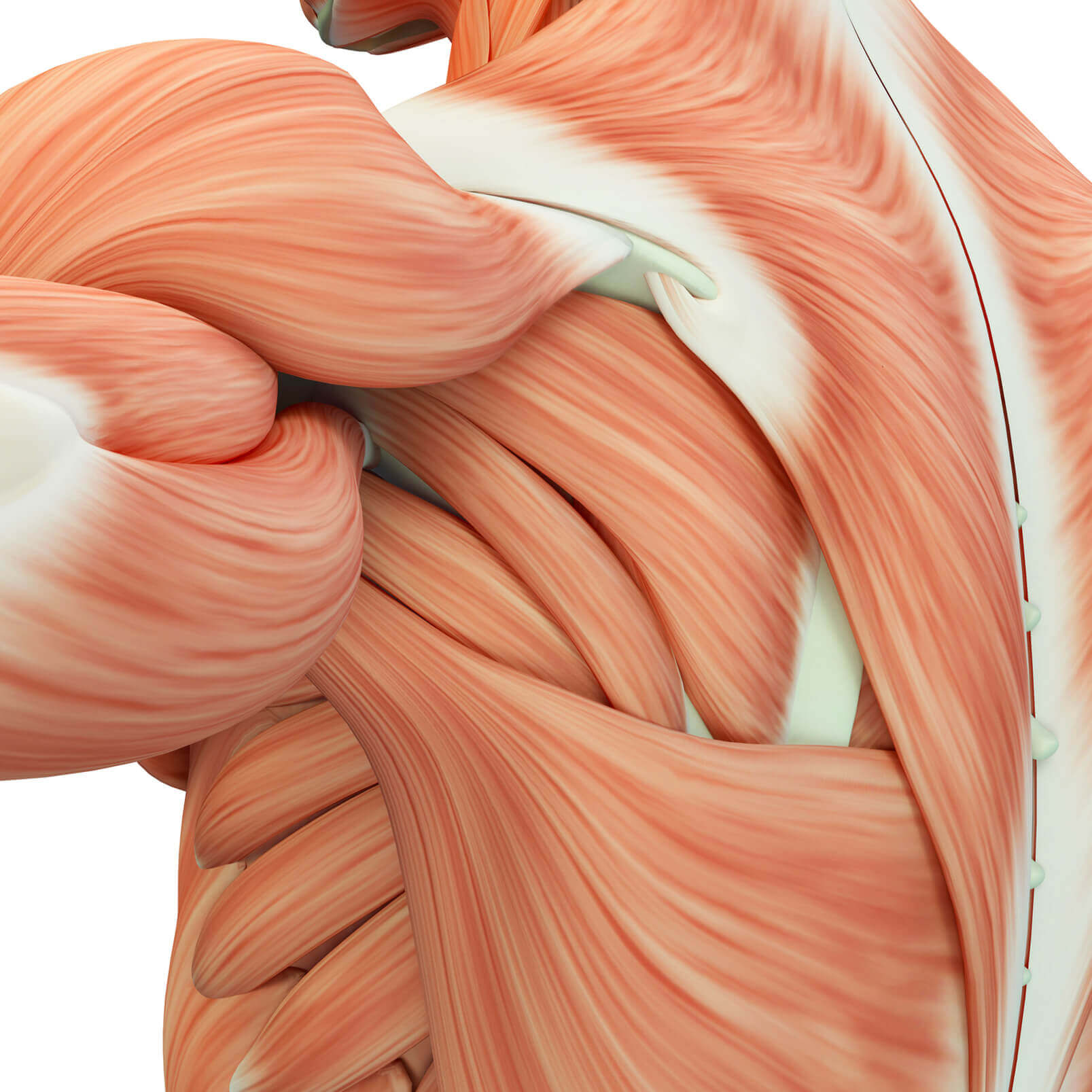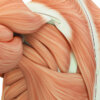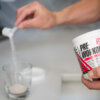Over ten years ago, a comprehensive literature review explained the science and theories behind muscle growth. Since then, current scientific understandings have changed how we think about muscle growth.
Overview
Muscle hypertrophy is a highly complex process that still perplexes top researchers. This has caused considerable controversy among those who investigate muscle hypertrophy. Over ten years ago, a notable expert in muscle hypertrophy, Dr. Brad Schoenfeld, proposed three mechanistic theories for how muscles grow. These mechanistic theories are mechanical tension, muscle damage, and metabolic stress. To date, mechanical tension has the most supportive evidence. However, the role of muscle damage along with metabolic stress poses some discrepancies and debates among researchers. This seminal review breaks down the ‘most-viewed’ study in The Journal of Strength and Conditioning Research.
What’s the Problem?
Despite challenges people face during fat loss attempts, reducing body fat is a relatively faster process than building muscle. The dedication and patience needed to notice visual increases in muscle mass can drive some individuals to abandon their goals due to frustrations. Therefore, generalized recommendations are essential, and understanding muscle hypertrophy is the first step in developing recommendations. Muscle hypertrophy has been defined by Vierck et al. (2000, as cited in 1) as the enlargement of contractile elements and the expansion of the extracellular matrix to support muscle growth. Since then, muscle hypertrophy has been more specifically defined as an increase in skeletal muscle size and increased mineral, protein, or glycogen, and intramuscular triglycerides 2. People commonly mistake the terminology hypertrophy and hyperplasia, understandably so. Hyperplasia is defined as an increase in the number of muscle fibers. So, hypertrophy is an increase in the size of existing muscle fibers, whereas hyperplasia is the splitting or addition of muscle fibers (muscle cells). Hyperplasia has been shown to occur in some animals, but evidence in humans is lacking and highly controversial 9. While there is still much to learn about muscle growth, more published research has guided general recommendations.
Since the publication of Dr. Brad Schoenfeld's review, most of the conclusions and interpretations he provides still hold, while some aspects require updating from recent evidence. Recently, Schoenfeld released the second edition of his book Science and Development of Muscle Hypertrophy which is essentially an updated, extended version of his previously published review 1. We highly recommend checking it out. In this review, we will summarize Schoenfeld's seminal muscle hypertrophy review and provide some critical updates that change the way we view muscle growth. The format of this review will be slightly different from our standard reviews and instead follows the structure of our topic summaries called ‘Seminal Reviews’.
Muscle Anatomy 101
Before attempting to understand the underlying mechanisms for muscle growth, we need to understand the structure and organization of muscle tissue. Muscle anatomy is complex to understand. You can think of the muscle tissue hierarchy like those sets of wooden stacking Russian dolls. We know it's an odd analogy but stay with us. Let's start backward with the most miniature wooden doll you'd find within the other bigger dolls; in muscle, this would be called the sarcomere. A sarcomere is the most basic, functional unit of muscle. Sarcomeres are composed mostly of contractile proteins responsible for creating muscle contractions. Sarcomeres provide the unique striated appearance of muscle cells (fibers) under a microscope. Sarcomeres are joined together to form myofibrils. Many myofibrils are bundled together to form muscle fibers. This pattern continues with bundles of muscle fibers making up fasciculi, and these fascicle bundles comprise the whole muscle. Connective tissue surrounds each bundle of tissue allowing for the distinction between the different levels of muscle organization. So, just like the little Russian dolls, the sarcomeres go into the myofibrils, the myofibrils into the muscle fibers, muscle fibers into fascicular bundles, and fascicular bundles into a whole muscle such as the lateral head of the triceps.
Figure 1: Muscle Anatomy Overview
Let's look at individual muscle fibers (muscle cells). Everything within the muscle fiber is intracellular; everything outside of the muscle fiber's connective tissue membrane (sarcolemma) is extracellular 2. Intracellular components consist of myofibrils, mitochondria, sarcoplasmic reticulum, nuclei, and the aqueous substance that everything floats in (sarcoplasm). Myofibrils which consist of all the structural and functional proteins (sarcomeres) are considered the myofibrillar fraction and take up most of the space within muscle fibers 3. Everything else is regarded as the sarcoplasmic fraction, including the mitochondria, the sarcoplasmic reticulum (SR), sarcoplasm, myonucleus, and even intramuscular fatty acids and stored muscle glycogen 3. Another unique characteristic of muscle cells compared to other cells is that it's multinucleated, meaning it has many nuclei, compared to other cells in the body, which only have one nucleus. Satellite cells contribute to this unique characteristic by donating nuclei to muscle fibers.
Figure 2: Anatomy of a Muscle Fiber (cell)
Satellite Cells
Satellite cells are muscle stem cells located within muscle fibers and possess self-renewing capabilities. These specialized cells are believed to contribute to hypertrophy because they are usually dormant until a sufficient mechanical stimulus is achieved 4. Once activated, satellite cells multiply and fuse to muscle fibers to repair, maintain and grow muscle tissue 5. The primary hypertrophy benefits of satellite cells are believed to be due to their ability to donate nuclei to muscle fibers so the fiber can increase its contractile protein synthesis capabilities 6. This agrees with the myonuclear domain theory. The myonuclear domain theory suggests there must be an increase in myonuclei to support the growth of necessary proteins for an increase in muscle fiber size 7. It's also been suggested that hypertrophy can occur with an increase in myonuclei and an increase in the size of existing nuclei 5. The three primary types of hypertrophy defined in the literature are myofibrillar, sarcoplasmic, and connective tissue hypertrophy 2.
Types of Muscle Hypertrophy
Myofibrillar
As the name implies, myofibrillar hypertrophy is an increase in the size or number of myofibrils 2. This is essentially the increase in actual protein tissue or contractile proteins in a muscle cell. Myosin and actin are the two primary proteins that form sarcomeres and contribute to muscle contractions. The addition of these proteins leads to an increase in sarcomeres, which increases the size of myofibrils and ultimately results in an increase in muscle cross-sectional area (CSA) 5. Sarcomeres can be added end to end (in-series) or stacked on top of each other (parallel) 8. The majority of myofibrillar hypertrophy that occurs results from parallel hypertrophy 8. You can think of a sarcomere as a straw. Grabbing a handful of straws would be like parallel hypertrophy. Wrapping a rubber band around that bundle of straws would make it a myofibril. Repeating this process and grabbing both bundles of straws (myofibrils) would begin the creation of a muscle fiber. You can think about in-series hypertrophy like connecting straws end-to-end.







